Martha Ullman West, Art Scatter’s chief international dance correspondent, took in “La Danse,” Frederick Wiseman’s documentary film about the legendary Paris Opera Ballet. How does it go wrong? Let her count the ways:

Last night I took a friend to Cinema 21 to see a benefit screening of La Danse, documentary filmmaker Frederick Wiseman’s take on the Paris Opera Ballet. Before I scatter a little venom about this highly uneven film, I would like to express my profound gratitude to Cinema 21 for supporting Oregon Ballet Theatre, the beneficiary of the screening.
Wiseman likes to be a fly on the wall with a camera (conjuring interesting visions of Vincent Price, come to think of it) at various kinds of institutions, from high schools to juvenile courts. And he’s no stranger to ballet: In 1993 he did a similar film on American Ballet Theatre, Ballet.
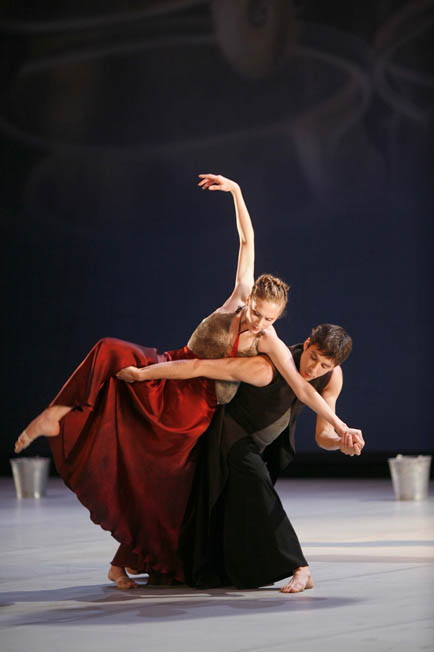 That one was OK, but just OK, though I quite loved the scene of then artistic director Jane Hermann losing her temper on the phone with the Lincoln Center administration, using language she did not learn at tea in the James Room at Barnard College.
That one was OK, but just OK, though I quite loved the scene of then artistic director Jane Hermann losing her temper on the phone with the Lincoln Center administration, using language she did not learn at tea in the James Room at Barnard College.
La Danse isn’t quite the worst dance film I’ve ever seen — Robert Altman’s The Company, not quite a documentary but not quite a feature film either, is probably worse.
But what these two directors seem to me to share is really lousy taste in choreography.
In The Company, which is about the Joffrey Ballet, all the revelations of the inner workings of the company culminate in a performance of the ghastly The Blue Snake, choreographed by Robert Desrosiers.
In La Danse, we see a lot of rehearsals and a pretty lengthy slice of performance of Angelin Preljocaj’s Medea, which culminates in the murder of her two children and the gorgeous ballerina Delphine Moussin covered in fake blood. There are literally buckets of the stuff on the stage, and post-infanticide, she carries a large piece of red fabric in her mouth.
Scatterers who are familiar with Martha Graham’s Cave of the Heart, which has no fake blood on a stage defined by Isamu Noguchi’s extraordinary set pieces and props, surely will feel as outraged as I was by this cheap knock-off.
In Graham’s masterpiece, Medea seems to pull out her own guts, which are represented by a red velvet rope: It’s a brilliant piece of theater that makes me shudder every time I see it. Preljocaj’s buckets of blood would have given me the giggles if I hadn’t remembered Melina Mercouri laughing her way through a performance of Medea in Jules Dassin’s movie Never On Sunday.
The rehearsals recorded in La Danse are quite interesting, especially when Preljocaj, having set the ballet, tells Moussin that it is now up to her, giving her a good deal of freedom to interpret the role.
Moussin is hardly the only perfectly gorgeous dancer we see in the film. All the dancers he films are lovely to look at, with extraordinary technique, and he shows them working in studios with raked floors, high up in the Palais Garnier, the arched windows overlooking the Paris rooftops. (Those shots, as well as exterior shots from the roof of the building, made me want to jump on the next plane to Paris).
We see them taking a break, eating in their own cafeteria (in which the food looks neither healthy nor like haute cuisine), getting on the elevator, walking down long corridors, being made up.
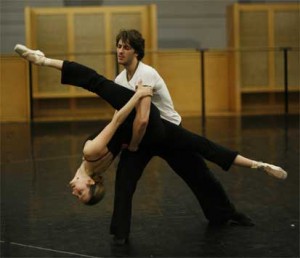 We also see them being coached by long-retired dancers, in one session a man and a woman (unidentified; typical Wiseman) arguing with each other about whether a leg should be raised or lowered. It’s all very amusing and quite lovable, like the old dancers in that most excellent of ballet films, Ballets Russes, by Dayna Goldfine and Dan Geller.
We also see them being coached by long-retired dancers, in one session a man and a woman (unidentified; typical Wiseman) arguing with each other about whether a leg should be raised or lowered. It’s all very amusing and quite lovable, like the old dancers in that most excellent of ballet films, Ballets Russes, by Dayna Goldfine and Dan Geller.
But that seems to be Wiseman’s only real bow to tradition. He completely omits the Paris Opera Ballet School, which is where those poor murdered children in Medea, forced to huddle with buckets over their heads, came from. For a good look at the ethos of the Paris Opera Ballet, and how students rise from the ranks, through a fixed hierarchy, there is an old, black-and-white French film called in English Ballerina that tells you a lot more about it than La Danse.
In a piece of directorial self-indulgence that makes this 158-minute film much, much too long, you do become extremely familiar with the corridors of the upper floors and the subterranean passages of the Palais Garnier. I did quite like the fish who, in the words of a colleague, had set up housekeeping in a flooded passage, and the metaphor of the beekeeper on the roof of the building was not lost on me: With providers of food, costumiers, set builders, accompanists, janitors, cleaners, ballet masters and Brigitte LeFevre, the queen bee who is the artistic director of the company, the building is indeed a hive of activity.
And it was a pleasure, a profound pleasure, to see these dancers performing some bits of Paquita in the grand tradition — and what a contrast to the rehearsals of Rudolf Nureyev’s unspeakable staging of The Nutcracker, which would appear to be completely free of children.
Wiseman does know how to film dancers: He isn’t obsessed with their feet, and he does show the whole body. On the other hand, a lot of the time, in the studio, he filmed them from the back so we saw their reflections in the mirrors — somewhat distorted, at that.
In the end, La Danse provides a pretty distorted view of a company that is one of the best in the world, and that’s a pity. It deserves better, and so do we.


 Our good friend Barry Johnson, the original Scatterer, who had the idea for this blog and brought it into being before parting amicably to pursue his own arts column and
Our good friend Barry Johnson, the original Scatterer, who had the idea for this blog and brought it into being before parting amicably to pursue his own arts column and 
 That one was OK, but just OK, though I quite loved the scene of then artistic director Jane Hermann losing her temper on the phone with the Lincoln Center administration, using language she did not learn at tea in the James Room at Barnard College.
That one was OK, but just OK, though I quite loved the scene of then artistic director Jane Hermann losing her temper on the phone with the Lincoln Center administration, using language she did not learn at tea in the James Room at Barnard College. We also see them being coached by long-retired dancers, in one session a man and a woman (unidentified; typical Wiseman) arguing with each other about whether a leg should be raised or lowered. It’s all very amusing and quite lovable, like the old dancers in that most excellent of ballet films, Ballets Russes, by Dayna Goldfine and Dan Geller.
We also see them being coached by long-retired dancers, in one session a man and a woman (unidentified; typical Wiseman) arguing with each other about whether a leg should be raised or lowered. It’s all very amusing and quite lovable, like the old dancers in that most excellent of ballet films, Ballets Russes, by Dayna Goldfine and Dan Geller.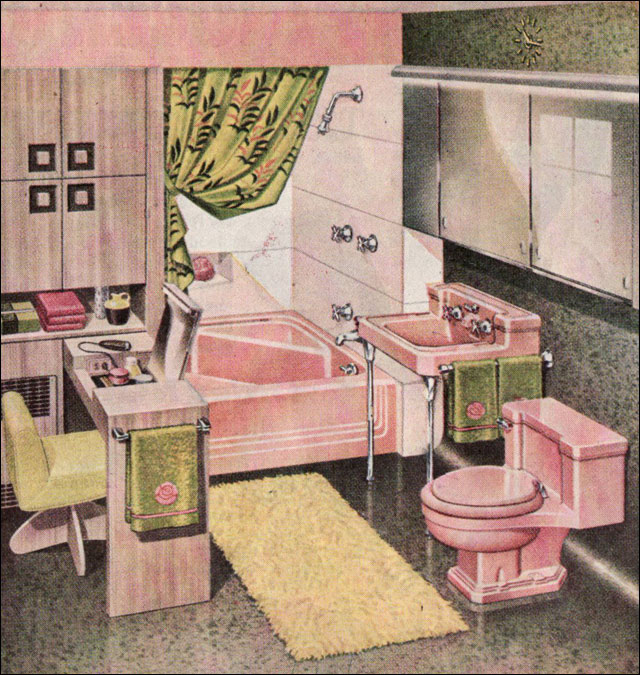
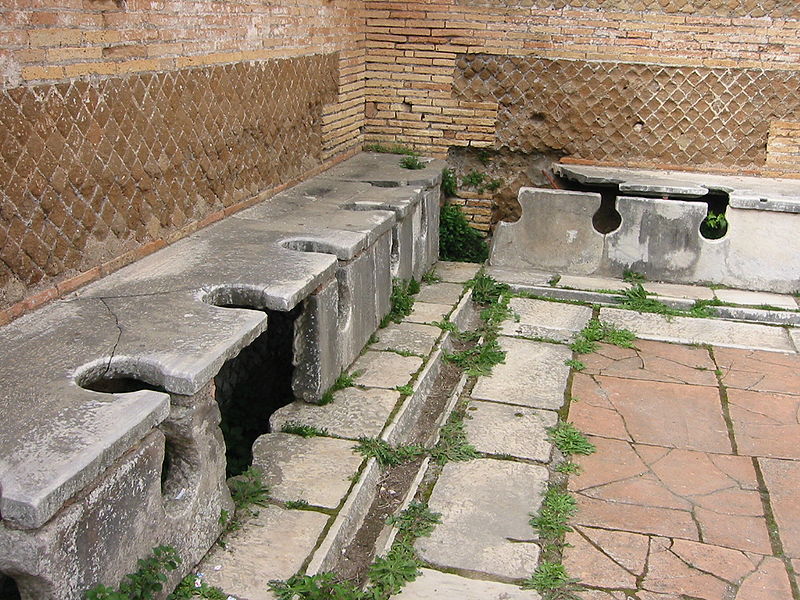


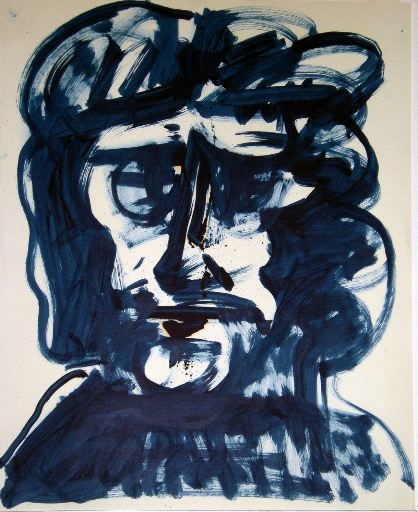
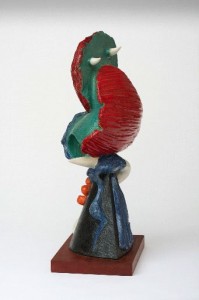 Impossible to even think about that now, which must mean Portland’s evolving into a city at last.
Impossible to even think about that now, which must mean Portland’s evolving into a city at last.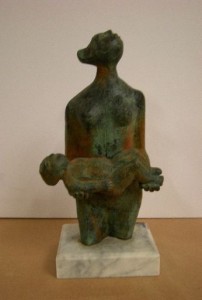 Another big player in those midcentury years, sculptor and printmaker Manuel Izquierdo, died in July. Notable (like so many of his contemporaries) as a teacher as well as an artist, he was also one of the artists who connected the Northwest’s sometimes insular scene to international ideas. He was born in Madrid, left Spain during the Civil War, and spent most of his adult life in Portland. But he brought a European spirit with him.
Another big player in those midcentury years, sculptor and printmaker Manuel Izquierdo, died in July. Notable (like so many of his contemporaries) as a teacher as well as an artist, he was also one of the artists who connected the Northwest’s sometimes insular scene to international ideas. He was born in Madrid, left Spain during the Civil War, and spent most of his adult life in Portland. But he brought a European spirit with him.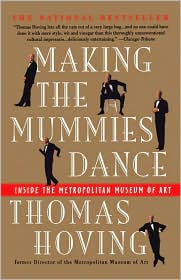 Hoving was a swashbuckler, a showman, a democratizer, maybe even something of a pirate. When he took over the great Metropolitan Museum of Art in Manhattan in 1967, at the age of 35, he declared it moribund and set out to make it the most popular show in town.
Hoving was a swashbuckler, a showman, a democratizer, maybe even something of a pirate. When he took over the great Metropolitan Museum of Art in Manhattan in 1967, at the age of 35, he declared it moribund and set out to make it the most popular show in town. At 20,000 square feet, the new building (at 1521 10th Avenue above downtown) will be smaller than the one in Pioneer Square but will have more shelf space because of better layout. Plus, it’ll have lots of nearby parking and good foot traffic day and night. And it won’t have the Pioneer Square grunge factor or the business-killing onslaught of baseball and football fans to the nearby stadiums on game days.
At 20,000 square feet, the new building (at 1521 10th Avenue above downtown) will be smaller than the one in Pioneer Square but will have more shelf space because of better layout. Plus, it’ll have lots of nearby parking and good foot traffic day and night. And it won’t have the Pioneer Square grunge factor or the business-killing onslaught of baseball and football fans to the nearby stadiums on game days. A few evenings ago I sat down and re-read
A few evenings ago I sat down and re-read 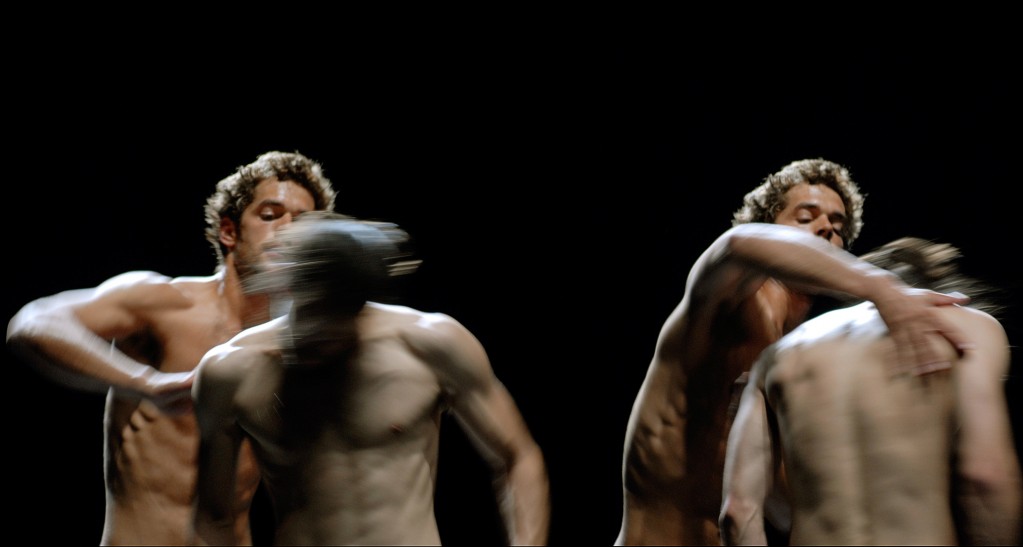
 The sign’s message, or warning, that the performance included naked bodies had been hastily amended: A small piece of paper with the scrawled word Full had been taped over the carefully printed original word Partial, directly in front of the word Nudity. The smaller paper was taped on only at the top, so it worked like a flap, and as they were talking one of the group was flipping it back and forth — Partial-Full-Partial-Full-Partial — like a piece of sly performance art. Everyone laughed, which was more than anyone did during the show itself.
The sign’s message, or warning, that the performance included naked bodies had been hastily amended: A small piece of paper with the scrawled word Full had been taped over the carefully printed original word Partial, directly in front of the word Nudity. The smaller paper was taped on only at the top, so it worked like a flap, and as they were talking one of the group was flipping it back and forth — Partial-Full-Partial-Full-Partial — like a piece of sly performance art. Everyone laughed, which was more than anyone did during the show itself. Skin has seldom seemed as somber as it does here in Leveille’s dance, which somehow manages to seem liberated and stern at the same time, like morning prayers at a Puritan nudist colony.
Skin has seldom seemed as somber as it does here in Leveille’s dance, which somehow manages to seem liberated and stern at the same time, like morning prayers at a Puritan nudist colony.